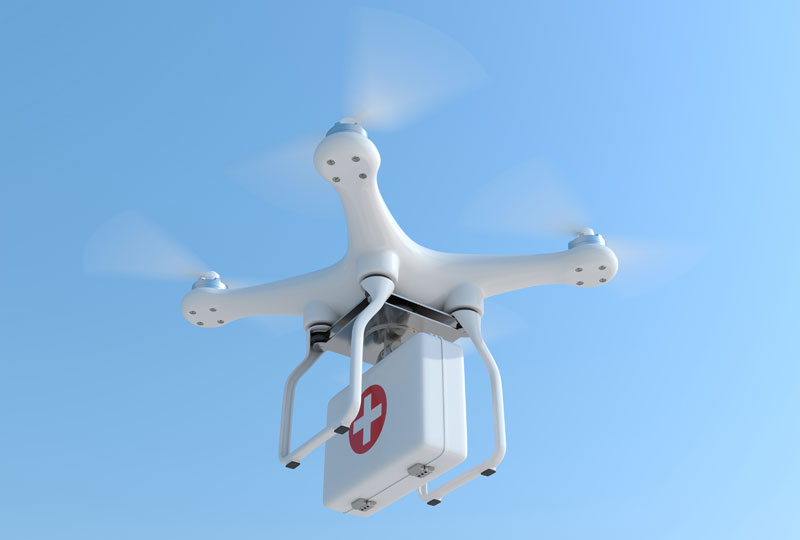Most people in Rwanda live in remote rural areas. A country where 10% of the population is still infected with HIV Aids and 10,000 children die each year, partly because of delays in testing, getting results back and receiving the necessary medication.
However, drones are aiming to change just that. Yes, this small East-African country, recognized for being the land of hills may very well be the world’s first drone port by late 2017. Drones which have been widely adopted by children and adult hobbyist “could do for transportation in Africa what mobile phones have done for banking”, as stated by Jonathan Ledgard, a director at the Swiss Federal Institute of technology. Ledgard, who alongside Norman Foster is deeply involved in this initiative, acknowledges that one of the primary aspects which is restraining growth in sub-Saharan economies is the absence of proper infrastructure for transportation. Even in those African nations whose economies are growing to double digits annually, the lack of infrastructure hinders many in the selling and distribution of goods.
Drones may very well be part of the solution. Referring back to Rwanda and the issue at hand within healthcare, drones could potentially solve the logistic issues with swift delivery of medication and blood samples. Blood samples would be inserted into a little box at the bottom of the drone. The current payload would be packages weighing 1kg, but they aim to see drones with a wingspan of 3m (10 ft) which would be able to carry deliveries weighing up to 10kg (22 lb). Drones with a 6m wingspan able to carry payloads of 100kg are intended to follow suit by 2025. In the case of a problem, a parachute would be loaded on the drone so that it could still be landed safely without harming the precious stored goods.
In Malawi a similar initiative is taking place, to have drones that do not require pilots and that fly upon pre-determined routes. These drones would be activated via a mobile app. The drones are being used to transfer blood samples from remote clinics to specialist testing labs, which up until now had been done via motor bikes. processes that would previously take hours would now be significantly reduced and may very well save dozens of lives.
Just like how mobile phones are revolutionizing the healthcare industry in Africa, drones have the potential of one day also doing the same.
Sources:
http://www.ozy.com/fast-forward/this-tiny-african-country-is-leading-the-worlds-drone-race/68048
https://www.theguardian.com/technology/2015/sep/30/rwanda-chosen-for-worlds-first-drone-port-to-deliver-medical-supplies
http://www.metropolismag.com/Point-of-View/July-2016/Norman-Foster-on-Using-Drones-to-Leapfrog-Development-in-Rwanda/
http://www.bbc.com/news/world-africa-35810153


Dear Sedale, thank you for your interesting blog! I think it is great that drones can be used for such purposes, especially in Africa, where as you mentioned, there is a lack of infrastructure. I can only imagine the endless possibilities drones could bring to for example Rwanda, and how it can disrupt the health care industry. I think your blog is a great example of how technology can even help people living in remote areas, and I will definitely keep a close eye on the developments!
Hi Sedale,
Very interesting subject! For the DTP project, I also did some research about drones and there implementations, so your blogpost really made me think. You should really see the short clip ‘No roads: There’s a drone for that’ on Ted.com from Andreas Raptopoulos. A billion people in the world lack acces to all-season roads. They can not get medicine to them reliable, they can not get critical supplies, and they cannot get their goods to market in order to create a sustainable income (Raptopoulos, 2013). He claims that drones could make a network in Africa just as mobile phones did! I completely agree with you that drones are going to change the future in underdeveloped countries, but they can do more than just shipping medicines and blood for transfusions.
Did you know the costs of flying a drone for 5 km with a package of 2kg just cost 23 cents in 2013?!
As you can imagine retailers like Amazon can see the benefits too as they are making a drone delivery system for packages weighing less than 2 kg as we speak. 85% of their packages are under 5 pounds, which is a little more than 2 kg. They have made the Amazon Prime Air, which delivers packages so that Amazon can deliver their packages immediately, which will result in less waiting time for the customer. I see some huge opportunities here, what about you?
Thanks again for your interesting blog post.
Kind regards,
Max.